On today’s podcast we’re covering hair loss, root causes and treatments.
My guest is Integrative Dermatologist Dr. Apple Bodemer. After finishing Medical School and Dermatology Residency at the University of Wisconsin, Dr. Bodemer completed a fellowship in Integrative Medicine at the University of Arizona. She was the first Dermatologist to be board certified in both Dermatology and Integrative Medicine and currently is the only Dermatologist to serve on the Integrative Medicine Board. She has authored academic texts and curriculum and has spoken widely on a variety of topics related to Integrative Dermatology. She has always been drawn to exploring how lifestyle choices impact skin health and disease and feels that the most powerful role a physician can play is as an educator and guide, empowering people to get healthy and stay healthy.
Right now, Dr. Bodemer is in the middle of a project to raise awareness and educate people about hair loss and hair thinning, so on today’s podcast we cover the causes of hair loss and ways to help address hair loss, this includes natural treatments, lifestyle changes, procedures, and medications.
So, please enjoy this interview…
To learn more, go to: https://appleskinhealth.com
Transcript of Root Causes of Hair Loss & Treatments with Dr. Apple Bodemer Episode
Dr. Cates: Hi there. I’m Dr Trevor Cates. Welcome to the spa doctor podcast. On today’s podcast, we’re recovering hair loss, root causes and treatments. My guest is Dr Apple Bodemer. After finishing medical school and dermatology residency at the University of Wisconsin, Dr Bodemer completed a fellowship in integrative medicine at the University of Arizona. She was the first dermatologist to be board certified in both dermatology and integrative medicine and currently is the only dermatologists to serve on the integrative medicine board. She has authored academic texts and curriculum and has spoken widely on a variety of topics related to integrative dermatology. She’s always been drawn to exploring how lifestyle choices impact skin an disease, and feels that most powerful role of a physician can play is as as an educator and guide empowering people to get healthy and stay healthy. So on today’s podcast we’re covering the causes of hair loss and ways to address hair loss, including natural treatments, lifestyle changes, procedures, and medications. I’m really getting to the root cause, so please enjoy this interview.
Dr. Cates: Apple. It’s so great to have you on my podcast. Welcome.
Dr. Bodemer: Thank you so much. Thank you for having me.
Dr. Cates: Yeah, absolutely. So it’s so great to have you on. I know I met you at the integrative dermatology conference and I was really excited to learn more about this project you’re working on and wanted to have you on my podcast. You can tell everybody about it. So you’re doing, you’re working on a project or to raise awareness, educate people about hair loss and hair thinning. So let’s start with you explaining why are you so passionate about this? Why was this something you wanted to take on? Yeah, well I as a dermatologist, I see women and men in my office on a regular basis who are suffering from hair loss and hair thinning and you know, I see a lot of conditions, psoriasis, melanoma, which is life threatening and there’s a lot of variability in how people approach it, but with hair loss it’s almost universal suffering.
Dr. Bodemer: Certainly by the time someone gets to my office, that’s the situation and often they’ve waited six to nine months in your have a lot of hope that I, that I can do something to get them back here. They had when they were 20 and oftentimes that’s not an option. There are certainly some things we can do. Um, and certainly lifestyle issues that I definitely talk a lot about with my patients, but, but we can’t always do something about it. And so I think it was just that universal suffering and I just wanted to find something I could do that we’re just helping you suffering. And really at heart I’m an educator and a guide in terms of that’s how I see my role as a healthcare provider. I really know, feel like I provide healthcare for myself, my family, but I can guide others with the knowledge and expertise that I have. And so I, I wanted to build these educational videos about issues related hair loss and then also to talk about the options if you’ve kind of gotten to a place where it’s like, well this is what it’s going to be, what do wigs really look like? Feel like, what should you look for? So that’s the second phase of my project, which will start probably the end of December, early January now.
Dr. Cates: Amazing. That’s fantastic. So, um, and you don’t have any hair right now. So what’s that about?
Dr. Bodemer: Well, I decided that if I’m going to do this project, I really wanted to just go all out and um, and I, I took off a pound of hair on August 16th, um, and I had really long just kind of a brown reddish brown hair and was something I never really thought of. And so I’ve been committed to shaving my head for the last three and a half months. Um, and I’m doing that about every three to four days now that it’s gotten colder. My hair actually does grow slower in the cold so I don’t have to shave quite as often. This is about day two. Um, so I do have a little bit of growth, but I, I wanted to really be able to talk to my patients who are suffering, who look at me and be like, yeah, easy for you to say you’ve got all this hair. And I wanted to be able to sit with that. And I gave myself kind of an end point for time. So I wouldn’t be able to just say, okay, I see I’m done shaving because I was done a month ago, I’m really done with shaving, but I think it’s been good for me to learn about, you know, this having to face it, having no like, okay, I’m going to be like this for at least another month and, and you know what, I have an end point.
Dr. Bodemer: A lot of my patients don’t, you know, so and I know that it will grow back and a lot of my patients know that their hair won’t grow back. So that tremendous amount of suffering. I know I can’t mimic that and have a full experience of it. But I wanted to come as close as I could to really understanding what people go through. And so what have you been experiencing about what it’s like to, to not have hair? What has it been like? Yeah, it’s cold. It’s really cold. And it’s interesting like, so I did this in August when the weather was warmer. I live in Wisconsin right now. We have snow on the ground as I think you do where you’re at. And um, and I, I wear hats a lot, but I all, I get a lot more, I get a lot of attention around cancer.
Dr. Bodemer: Um, and so that’s brought up a couple of things for me. One is when I’m wearing hats or scarves or things to cover up my head to keep it warm, a lot of people make assumptions about my level of health and I’m in the other thing that recently has hit and he’s like, wow, it’s so common. People asked me so often about that, that it just speaks to how common that disease is in women of my age group and how just just really sad that is. And how with as long as we’ve been fighting, you know, fighting cancer that we really, we’ve turned it into a chronic disease. But, but now it’s expected that a woman of my age would have cancer. Um, so, so that’s one thing. The other thing is this idea of privilege. I had long hair that was, I would go to bed with a wet wake up with it, you know, run my fingers through it.
Dr. Cates: I didn’t even own brush until I had kids, I never owned a hair dryer, so I really took it for granted and as I’ve been in, this is actually a lot more maintenance for me than my long hair and realizing that a lot of women of African American of African descent or who have more kinky, curly hair, what extent they go to, to make their hair like the hair I had. Um, and so that’s been a really interesting kind of part of this project that I didn’t really expect to come up but not against, but just to be exposed to the whole hair industry and um, and what goes into making wigs and where the hair comes from and all of that.
Dr. Cates: Well, I bet you’ve learned a lot along the way. I’d love to talk next about what are the causes, what are the causes of hair loss and there’s total hair loss and then there’s partial hair loss and hair thinning. So can you explain a bit about that?
Dr. Bodemer: Yeah. Yeah. So, so there are, as a dermatologist when somebody comes in and says here is getting thinner or it’s falling out or it just isn’t just big as it was and we really look at the scout to look and see what might be going on there because we like to break down here last into two categories. Is it scarring or non scarring? And that’s very significant because if you have here follicles that have scarred, there really isn’t a way to bring that back. It’s a scar. Tissues already set in. I’m usually. There’s a significant amount of inflammation that happens before that scarring sets in. So if we’re in an active inflammatory stage of hair loss, there are things we can do to at least help minimize that inflammation and minimize that scarring. We also have genetics that play a role, so.
Dr. Bodemer: So there’s sort of, when you kind of break it down, their scarring and nones going, there’s also genetic hair thinning, hair loss, that sort of something that we’re all kind of programmed. It really doesn’t follow any specific lineage. We used to kind of think it followed the dad’s side and then if your mom had been here, you might have been here, but that it wouldn’t follow with your dad who was bald that you might have fitting as a woman. Um, but it really doesn’t. There’s a lot of genes that play a role in that. Um, and we see that in two different pattern types for men and women. Men tend to go, you know, receding hairline and they tend to go bald. Whereas women, we just tend to go thin on top and we just didn’t see a lot more of our scalp. And that’s something that a lot of women really struggle with.
Dr. Bodemer: Um, you know, certainly there are disease conditions where you have too many androgens floating around that male type hormones. And that’s important to distinguish if a woman is in her thirties and still in kind of the child during phase of life and having this very significant androgenetic or, or patterns type hair loss than we really need to think about what, what are your hormones doing? And do we, you know, is there something you need to worry about there? So, and then when we get into the scarring and non-scratching there, a lot of it is autoimmune related and I know you talked a lot about autoimmune disease with, with your guests and with your clients and that definitely, you know, Alopecia Areata is one that when people say allocation, that’s what they think about. They think about these little round patches that sort of go might go all over your scalp flares up usually during times of stress.
Dr. Bodemer: And then usually the hair will grow back within a year and people will, some people have one episode, but it might be relapsing. And then that’s where people will lose all of their hair when we get the alopecia totalis, which has all of their scalp hair. And then universe. Alice has all of their body here. And so there, you mentioned there are different diseases that play a role in this. Um, what are some of those? Um, well, um, with the alopecia areata that the autoimmune type, we do often see thyroid issues go along with either before or after in terms of at least the way we detected on the tests that we typically use. It can also be associated with other autoimmune diseases like fiddle. I go in diabetes, I’m the, there’s another type of. So Alopecia Areata is a non scarring type of hair loss and the here usually comes back in unless you have one of those very significant widespread cases.
Dr. Bodemer: Then there’s also a scarring of alopecia called Lichen planopilaris. And that shows up in a few different ways. Usually there’s a lot of stinging, itching, burning on the scalp. It usually shows up after menopause, although I have to say in the last 10 years we’ve been seeing it in men which we never saw before and in younger women. And I think that probably speaks to some of the hormone disruptors we’re seeing in our environment. Um, but, but that’s, so that’s a scarring type, um, with, with telogen effluvium, which is a really common type of care. Lots of people come in and they’re just shedding tears. The shedding all over, people can lose up to 70 percent of their hair in one of those episodes. Um, and that’s usually due to stress. Um, we always think of stress as like, oh, stress is like an emotional weakness.
Dr. Bodemer: A lot of times in our culture we portray it as this negative thing that we have to battle and conquer. But really any change our body sees is stressful on the system. And so even really good things. I have women come in, like I just got married, we moved to a new city and we bought a new house. I’m like, well, there you go. That’s a lot of stress. It’s, it’s good, but it’s changed and, and you know, stress keeps us moving forward. It keeps us trying new things. And so it’s not all bad. It’s how we relate to it. I’m certainly things like thyroid disease and nutritional deficiencies can cause stress on the body and that can lead to hair loss most commonly thyroid disease, even when it’s not associated with the autoimmune type of hair loss. And then iron deficiency is a big one. Vitamin D deficiency is one we’re learning more about.
Dr. Cates: Okay. Alright. So when someone comes in to see you and what are the tests that you do? You obviously you do a physical exam to look at their hair and what the pattern is, but what kind of tests do you do?
Dr. Bodemer: Well, certainly looking at the Scout, just the pattern, but also what’s going on with the scalpels or flaking scaling redness. And then um, we’ll ask about symptoms usually will look at fibroid. So we’ll do a thyroid panel on a patient or sometimes we’ll just check a Tsh, depends a little bit on their symptoms. And family history will often look for an iron or Ferritin level is the one that I use. Ferritin is a measure of how well your body kind of your body supply, so you can have a normal iron level, but if your supplies are low, you can dip in and out of deficiency enough that it impacts your hair grows.
Dr. Bodemer: So that that’s the, that’s the test that I used to work for iron levels overall. And then I always check a vitamin D level on patients. We know that vitamin D levels are associated with hair loss of a wide variety, if it’s associated with autoimmune conditions. It also appears that vitamin D can take a dormant hair follicle and stimulated to grow. So even in those patients who have androgenetic or the the pattern hair loss, I’ll check a vitamin D. it’s pretty common in the area that I live up in the northern parts of the country. So that’s definitely something we look for. And then if you have concerns about specific autoimmune disease, we may do some panels looking for autoimmune. One of the sort of soft tests that we do is to pull your hair. And so that’s something that people should be prepared for.
Dr. Bodemer: We’re not trying to hurt you’re hurt you. Um, and we’re not trying to make you lose more hair, but we’ll usually do several gentle tugs around the scout to just see what here comes out. And then we’ll look at that hair specifically looking at the hair bulb because that gives us a picture of where the hair was at in the growth cycle when it’s coming out. Um, and we want to the agent that’s a resting phase. We want to see a nice little club like Tila, virgin hair coming out. Um, and then if we see hair in different stages that, that might give us some clues to, to other things that might be going on. So you pull up the Harry look at it under microscope. Um, yeah. And I actually, I have a little tiny pocket, really high power magnifier, so I’ll just pull out my German light and call it, um, or if, if you don’t have that then under a microscope.
Dr. Cates: Yeah, that’s great. That’s great. And you know, it’s interesting what you were saying about vitamin D. What I’ve noticed that my patients, a lot of people that are deficient in one or deficient in a lot of them are those two come together, iron deficiency. A lot of people that are deficient in that. They also have vitamin D deficiency. So, um, I, you know, I didn’t really know that much about vitamin D as being associated with y’all, so that’s great to know. Okay, great. And so, and then there are also a situational things that cause hair loss, like cancer treatment. Right? So that’s another big one that you probably see.
Dr. Bodemer: Yeah. And you know, most of the time at this point we all kind of expect it. The cancer patients are expecting it and deal with it, the different types of chemotherapy. There are so many out there now have different levels of association with hair loss. There are some where we don’t expect the hair to come back, that it commonly leads to permanent hair loss. Um, luckily that’s the, most of them. The here we’ll come back, it often comes back different and you know, usually like people will come and say like, oh my hair came back thicker or curly or a different color. And that’s because that really strong drug is intending to stop growth and that really does damn it damages the hair follicles to degree and changes the way that they, um, that they function. And so it really can actually even change the texture and quality of your hair.
Dr. Cates: Yeah. So when you said that some people’s hair will grow back what these various for the various reasons, um, and addressing the root cause or the what’s, what’s going on behind it? Uh, but sometimes even addressing, there were costs. The hair doesn’t grow back, Huh?
Dr. Bodemer: Yeah. I mean, and that comes a lot. There’s, there’s the genetics that go along with this that we really can’t run away from. Certainly lifestyle gets passed on, not through our genes but through our habits. And so, you know, you can still address some of the lifestyle issues that might might contribute, but if you come from a family where all the men are bald by the time they’re 40 and your mom had been here, it’s, you know, there’s probably not a whole lot that we’re going to be able to do to keep your hair looking like it did when you were 20 or 30.
Dr. Cates: Right. Are there, are there any procedures or things that people can do though to Kinda, you know, Kinda get that jump started into a to help accelerate that?
Dr. Bodemer: Yeah, so certainly, I mean, I think managing your stress well so that it doesn’t have a negative impact on your life. We can sure getting good sleep that, that does a couple of different things because it also helps regulate, regulate your hormones more appropriately. Um, and then eating a diet really rich in phytonutrients, lots of plant based foods, lots of antioxidants are going to help, you know, certain certain vitamins and minerals do help with hair. We don’t necessarily see them as much when you’re specifically looking for causes of hair loss. But like vitamin A, selenium is a big one. Vitamin E, all of those things you’re going to get enough of if you’re eating for the most part.
Dr. Bodemer: I really plant rich diet, but there might be situations where a multivitamin, it’s important there to kind of fill in the gaps. Um, and then, um, and then certainly there are things that we can do from a medication perspective to alter hormones if that seems to be a problem or to help manage thyroid issues. And then, and then from procedures, there’s something out there that’s on the newer in terms of, at least the dermatologic applications is this platelet rich plasma seems pretty promising. Um, I don’t do it myself. I work in a big university setting and I’m in the midwest where we tend to be slow to adapt these, these newer things. But I do have a couple of friends in Chicago who are doing it for hair loss and um, and you know, the testimonials are amazing and when you go on the Internet to find amazing things, it seems like it works for about half of people and there are two different ways.
Dr. Bodemer: So basically with this platelet rich plasma, um, professionals drawing your blood and spinning it down, ideally twice because the first time you’re gonna separate the red blood cells from the plasma and then you want to separate out the plasma to the heavier, um, platelet rich part. And that has a lot of growth factors, so there are a lot of reasons it should work. Once you have that platelet rich plasma, some people will say you can just rub it on the scalp. I don’t know how, if you’re going to get enough absorption, if you just rub it on the scalp, um, other people will do microneedling, which is where you take this little roller ball and roll it across the area that you’re wanting it to get into and then apply it topically. And then the third way that people do it as to actually inject with, with insulin syringes really find needles into the scout.
Dr. Bodemer: I have some concerns about the injections just because that could be causing a little more damage than you want. Certainly we do that a lot for alopecia areata and other types of inflammatory conditions. We inject steroids into the scout sometimes to kind of calm down that inflammation quickly. Um, but I think the micro micro needling followed by prp probably, you know, I think that’s probably the best way to go. But like I said, it’s, it’s not, it’s not magic for everyone. Um, and why it works for some and not others is the health of the individual. I mean, if you don’t have healthy, if you don’t have good platelets, um, you know, if you’re not living a healthy life or you’re over a certain age, they just, it just doesn’t have the same effect. I think that’s part of it. Yeah. Yeah. You’re, you’re absolutely right.
Dr. Cates: I think I hadn’t really thought of it in those terms before, but yeah, if you’re eating a lot of food that’s kind of feeding growth and that that’s gonna make your blood richer and also your hair follicles are going to have better microcirculation. So the, the blood vessels getting to, there’s those follicles are going to be healthier as well and more able to support growth.
Dr. Bodemer: Yeah. I love, and I love that microneedling too because like you said, it stimulates the circulation. You’ve got a number of things going on with that that I think would be helpful. I’ve had several people in my podcast talking about the microneedling of the face and the PRP facials and so I think, but, but I think it’s good for people to know that it can also be done on the scalp to help with hair and you know, it’s not 100 percent, like you said, it’s not, not everybody gets their hair growing back and, and part of that might be genetics.
Dr. Bodemer: I’m part of it might be the health of the individual. There could be a lot of different, a lot of different factors. Also finding a good practitioner, somebody that’s doing a really good job with it. The procedure itself probably plays a role too. Yeah, absolutely. You want to make sure you’re working with somebody who knows what they’re doing. Right? And then they’re there. A lot of lifestyle things that we, we certainly don’t want to diminish any of that. I mean, having your procedure is, you know, can be a great thing, but really would get back to the basics of lifestyle. Um, you know, uh, you know, I know also sleep is important exercise, right? So, so those types of things are good. Yeah, absolutely. You know, I, I, I think I saw a little meme or a little, a little figure that was, you know, when we’re, when we’re dealing with issues on the kind of, on the outside we like, I know you say this all the time to get to the root of the problem, get to the root cause of whatever is causing this and really think about feeding the soil and in our systems, our blood is our soil, our blood nourishes us in anything that we can do to help keep that healthy through diet and exercise and sleep in really maintaining good hormone balances and maintaining a good gut microflora that, that makes us a good garden for healthy, healthy skin, healthy hair, healthy nails, healthy organs.
Dr. Cates: Absolutely. Yeah. And so all of that I think is creating a really great foundation with hair growth in so many different things. And I love that you’re doing this as a project. So tell us more about the project and where you see it going, the impact that that you want it to have.
Dr. Bodemer: Yeah. Well, I would like to just reach as many people as I can. This all of got started with a silly idea where I was like, Oh, I’ve had short hair. I donated it many times. My girls and I have done different, wash out your colors. I’ve had it green and pink and my patients kind of know the ones that know me come in and they’re like, okay, okay, what are you doing now, Dr Omar. And then I get to kind of talk to them about this project. But I kind of thought, I wonder what I look like bald.
Dr. Cates: Maybe I’ll just do that. Maybe I’ll just shave my head and see. And then that week just as fate or the universe, whatever directs us to what we need to be looking at. Um, I saw a number of patients with Alopecia Universalis and Cortellis that day or that week. And um, and as I sat there in kind of hearing their struggles about dealing with issues that come along with, with the hair loss that they have and the fact that those people typically don’t regrow. Um, I, I, I kind of thought more about it that, well, how could I, maybe I could, should, could shave my head in a way that would help other people. And then I ended up getting delayed as life just gets busy and during a, a kind of delayed stage, I was going to do it in June and have it all done by the end of this summer. I had all these kind of ideas about how it was going to go.
Dr. Bodemer: And I met this woman in the hairpiece industry and she said, let’s go ahead and let’s, do you know when you’re done with this, when you’re regrowing your hair, I want to put you in these different wigs. I want to show people what their options are. And I wouldn’t have had that if I had kind of stuck to my kind of self imposed schedule. And so now that I’m kind of a two or three weeks beyond where I hoped to be when I hope to be growing my hair now already. But I keep thinking like there’s, there’s reasons and I’m more will come of this or I’ll reach one extra person because of this extra time. I don’t know what it is, but I know in some sense I’ve accomplished my goal, the, the, the patients that had alopecia, that have alopecia Universalis that inspired me to do this.
Dr. Bodemer: They’ve already come to me and told me how, um, how much more empowered they feel and how glad they are to see me out there doing this and raising awareness for them. So that feels really satisfying. But I really want to reach as many people as possible. And with the second stage, I think it’s even, it’s as important to, to just help people understand what their options are. Because when someone like me or somebody like you who has gorgeous hair, you know, and they kind of say, oh, well, maybe you want to think about a wig. I’m, it’s, it’s really hard for people to stomach. And I could understand that. When you think, well, you have no idea. We all think of these gnarly things that our kids were on Halloween that you can’t get your fingers through and that you have to sort of untangle at the end of the season when they go in the costume been, but they are, some are really beautiful and you know, price point plays a role and there’s different qualities, but there’s so much out there and I just want to open people’s eyes and, and help them see themselves in a different way and help them see beauty in a different way because we have such circumscribed ideas about what it is to be a beautiful woman.
Dr. Bodemer: And he usually doesn’t play into that. Sometimes it does. And it’s an identity thing. You know, a lot of women who choose it are really powerful and wanting to, um, exhibit that power to the world. But a lot of women that I see aren’t, they want to fit in, they want to be seen as beautiful and feminine. Um, and, and so how can you do that when you don’t have a lot of hair? What, what will these ways offer? And, and if you can kind of get past that identity of, of your identity being tied up when your hair. I’m hoping to show people that these can be really fun. It could be fun to be red head one day and then belong to the next or whatever it is. Um, so I’m, I’m really hoping just to empower people to know what their options are and understand what’s going on with, with, in their situation a little bit better.
Dr. Cates: Yeah. I love all of that. You’re talking about him and what is beauty and what, you know, what, that’s so much a beauty radiates from the inside out. You know, it’s, it, it comes from something so much more than just what people see on the surface of the hair and skin and all of that. There’s, there’s something that comes in and you know from us that, that we can radiate that beauty without having to have a whole head of hair. I mean, I was on not long ago, I was in Uganda with visiting the children there and then they all shaved their heads and they’re just so beautiful. The people that, you know, and I’ve seen someone like yourself, you know, so many people that don’t have air and they’re still just beautiful and it’s the radiant, um, aspects of the personality and um, and it’s so much more than what we consider beautiful and look at magazines or models and that sort of thing.
Dr. Cates: Right. So I love all that. And, and I, I, I’m really curious about the, all the wigs and hair pieces and all the, there are a lot more options than there used to be. And uh, so I mean, anything else you want to say about that or what are some of the good resources for people that are looking for, um, you know, as their hair’s growing back or if they’re choosing, you know, or you know, if they are choosing to use a wig because their hair is not coming back, what are, where people go to find this kind of thing.
Dr. Bodemer: Yeah, you’re catching me a little early for that one. I’m, I hadn’t really done super deep into that. I’m into that yet. But um, and, and part of that, that’s part of why I want to do that whole second phase is because it’s so overwhelming. I have done a couple of google searches, um, and I’ve actually toured some salons and that, that I direct patients to because they do a really good job. Um, and so I would recommend, I think it’s really important to touch and feel them because that really impacts how you’re going to feel wearing it because we touch our hair all of the time. And I’ve had the experience. I, um, I’ve actually officiated a couple of weddings during this time just for friends. It’s something I’ve kind of done just just to, just for fun. And I sort of had several friends asked me to do it and one of them I knew many people and it was local and I just wear my wig for the ceremony so that I wouldn’t be up there at bald and taking the attention away from the bride and the groom.
Dr. Bodemer: And then the other one was a whole weekend thing where I had to wear this week all weekend long in the hotel. Out of the hotel and little things like, okay, I need to go grab more suitcases for my kids and um, but I wasn’t ready to run out the door. I’m like, wait a minute, the Kotel is teeming with people from this wedding and I need to put my weight back on because I’m really not, you know, I didn’t want my, I didn’t want that wedding weekend to be a platform for me to talk about my project and to do my educating there. It was really my, my really close friends weekend and it was, it was her time and I didn’t want her to be getting asked questions by her family and other people. So, so that was really interesting. I have patients that hide their hair loss even from their husbands and even just that short two days made me realize like how exhausting that would be to kind of have to hold that up all the time.
Dr. Bodemer: Um, and, and so figuring out how to wear these weights and hair pieces in an authentic way, but that doesn’t, doesn’t become another job. Right. And that would be my recommendation is, is ask around, ask your hairdresser at, but make sure you have somebody who’s experienced with them and who is used to cutting and styling because usually I’m one of the hair stylists that I met with. She buys these widths and they look like, um, oh, what is it that, that cousin it from the addams family with the hair all over, that’s what they look like. And then she will cut them and style them and tie them to match whatever it is you want. And so that’s an important thing too when you’re thinking about it, of how much upkeep is this hairpiece or awake gonna cost. Um, I’ve met some incredible stylists that are doing incredible things, um, especially in the African American community where, um, where their hair. It’s, I mean, we could talk for hours just about that. Um, but, but there’s, you know, they use a lot of chemicals that are really not good for their bodies and even a lot of Caucasian women who start dyeing their hair in their thirties. So one of those chemicals are not. No, not great for our bodies, especially, you just want to make sure you know where you’re getting your product from.
Dr. Cates: Oh yeah. I’m all about about products on, on the body and how they can be, uh, can create a negative effect on the health. Um, so, uh, you know, I guess everybody should just stay tuned if you’re interested in learning, you know, to follow, follow apple and make sure that um, you’re, you know, you’re, you know, you’re finding out what she’s discovering so I can’t wait to see what, what comes for you and what you discover. And speaking of like looking ahead, what are you excited or anxious, excited to see about in the research? What is coming up on? Is there anything on the horizon for treating hair loss? Um, is there anything that you’re seeing it and like, wow, I can’t wait to see more of that or maybe this is a good option for people down the road?
Dr. Bodemer: Yeah. So one area that have gotten really curious about is hormone fluctuations and how, what role they play in a variety of skin related issues. Um, but, but, and that’s, I know that there are people out there doing that work, um, but in particular for the pattern hair loss, which is something that’s kind of shrugged her shoulders and it’s like, well, you can try Rogaine, which is a big headache and a big mess for a lot of people. Um, so I’m excited to personally learn more about that, kind of dive a little deeper into how the hormones that circulate in our body impact not just our hair but our skin as well. Um, and then, and then really, you know, I already know how it impacts like sleep impacts hormone levels and all of these different lifestyle issues that, that we kind of think about, well, good for our overall health, but really it’s really important to navigate and manage these, these hormone fluctuations that everybody from day one starts to feel in certain points in our lives.
Dr. Bodemer: Those home fluctuations are much more magnified and amplified. But um, but that, that’s kind of, you know, the hormones are kind of messengers in our bodies and sort of go around and tell everything what to do with a little bossy ones. And so, so that’s kind of a personal journey. I’m really excited about this prp. I’d like to see more of it. And, and I think it’s definitely that’s happening. People are doing more with it. I’m also really curious about stem cell, um, you know, what may come up with applications for stem, stem cells and, and I think it’s something that we’re still trying to figure out like what sources of stem cells and know how can we keep ourselves from aging too quickly. I mean if you take the opposite of the stem cells is like, well how can we keep the normal cells that we have with that more elastic quality to be able to kind of turn around and change itself in a positive way.
Dr. Bodemer: We kind of know a lot about how, how our cells do that in a negative way in terms of cancer, but how can we, can we use that in a way where we can actually, um, enhance our functioning rather than have it be something that’s taken away from us. So I don’t know that that’s kind of a little bit futuristic, but, but for now I’ll, I’ll kind of look at the growth and the growth factors this prp and um, and then just focus on trying to bring more about, about sort of regulating immune system through God and through hormone fluctuations for my patients.
Dr. Cates: Yeah, that’s great. Um, I think that, I think there is a lot, um, what you’re talking about with stem cells too and starting. I’ve had a few people on the podcast talk about stem cell treatments and autologous stem cells and the future of that, what’s possible and then there’s a lot of exciting things around the corner for that. And, and like you said, I mean hormones are a big part of that, whether it’s irate or sex hormones and they have such a huge impact on our health. And then what are we doing these days with all the environmental of endocrine disrupting chemicals that we’re exposed to on our air, water, food and personal care products. And how is that contributing to the mass we’re creating? Yeah. So it’s all really interesting. Well, um, why don’t you tell everybody where they can find you, how they can learn more about your project and follow what you’re working on.
Dr. Bodemer: Yeah. So I have website, apple skin health.com and I’m also in social media. I’m on facebook and on instagram and right now my hair project and been the most active on facebook and instagram. I kind of, my, my website, I’m not as up to date right now is I’d like to be, but I will be posting more videos. The website is where you’ll find the heavy content videos with, with a lot of information about specific types of hair loss and how to take care of your hair and you know, they’re really kind of juicy tips. I’ll have some recipes for a variety of things. I’m on there. I love making like getting in the kitchen for skincare products. And um, and so I’ve got some hair mask recipes they are right now, but I’ll be putting more up there, um, as time goes on and as I build that website out, but um, but right now, right now what I’m doing mostly on facebook is when I shaved my head every five days. I’ve been trying different shaving creams. So if you find me now go back a little ways, but you’re going to see me shaving my head and talking about the variety of products I’m trying and I’m, and what I think of them. So, um.
Dr. Cates: Alright. Well Great. Well we’ll have that link up to your site on a below your interview as well. Thank you so much for coming on today and I’m definitely, I’m gonna stay in touch and see how this whole journey goes for you. I’ll look forward to learning more from you. Thank you so much. You have a great day. I hope you enjoyed this interview today with Dr Appel Bohmer. And to learn more about her, get the link to her website. You can go to the SPA Dr. Com go to the podcast page with her interview and you’ll find all the information there and while you’re there I invite you to join the spa doctor community so you don’t miss any of our upcoming shows. Also, if you haven’t already taken the skin quiz, it’s a great way to find out what messages your skin is trying to tell you about your health. You could go to these skin quiz.com. It’s our free online quiz two. It gives you great recommendations on what you can do to address the root causes behind skin issues, and also I invite you to join me on social media, on facebook, pinterest, twitter, instagram, and Youtube, and join the conversation and I’ll see you next time on the spot after podcast.
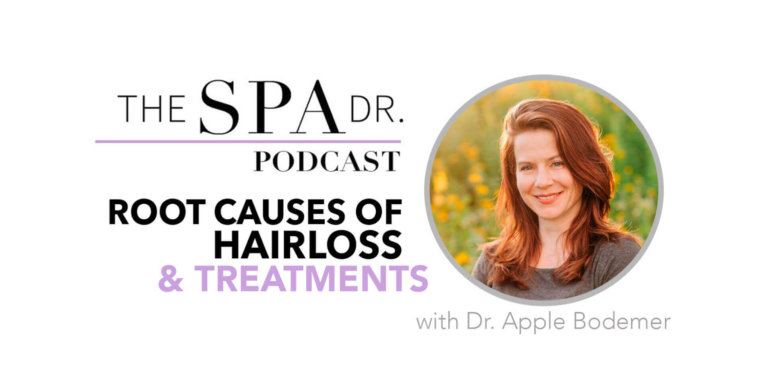
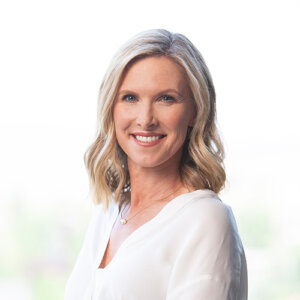
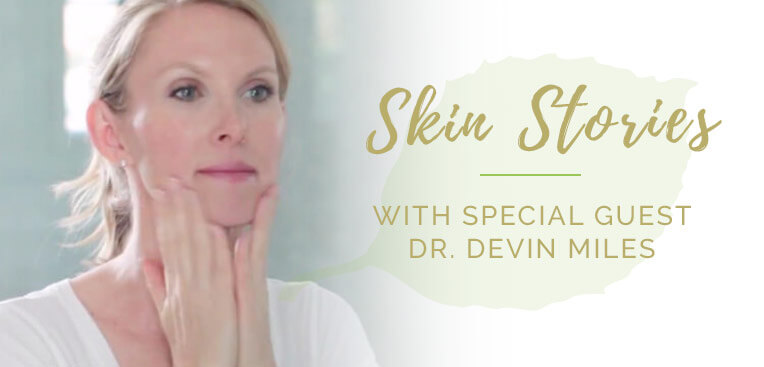
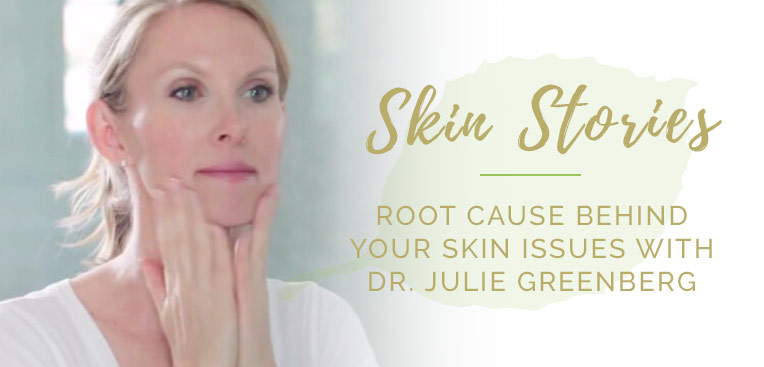

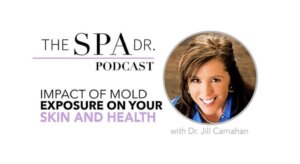
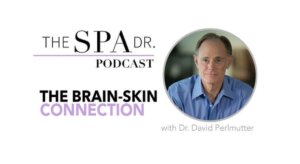

Reader Interactions